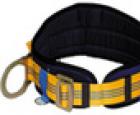Valin: why is he needed in sports. Benefits and significance of the aliphatic amino acid valine for the human body Dosages and side effects
There is an opinion that the amino acid content in foods is necessary for athletes to achieve better sports results. One of the amino acids that has recently been increasingly mentioned as essential is l-leucine, valine and isoleucine.
In order to verify the usefulness of this amino acid, you should understand the mechanism of its action on the body. Since there may be an opinion that sports nutrition manufacturers are interested in spreading the myth about the usefulness of a particular product to ensure a constant and stable income. Or the entry into the market and popularity of leucine is associated with its usefulness and effectiveness. And is this substance actually found in products?
One of the amino acids that has recently been increasingly mentioned as essential is l leucine.
What is l leucine (l isoleucine)
Leucine is the most important amino acid, which is directly involved in the creation of new structures in the protein molecule, which serves to increase energy received and improves metabolism.
This amino acid belongs to the group of those with branched structural chains inside the molecules. In addition to it, this group includes valine (l valine) and isoleucine.
The complex structure of the side chains is used for the cells to synthesize the energy that athletes primarily need to fully engage in sports. That is why the presence of these amino acids is required in the diet in full.
Features of amino acids: effect on the body
This amino acid is very necessary for athletes, especially those involved in powerlifting or bodybuilding, since this amino acid, which is found in foods, according to recent research, has a very effective effect, which is aimed at increasing protein synthesis. And protein, as you know, serves as one of the main building materials of muscle fibers.

Amino acid L-Leucine
In addition, leucine and valine (l valine) are able to resist the process of destruction of protein molecules, which has a positive effect on the growth of muscle mass. It turns out that taking drugs with leucine or it itself in its pure form after strength training leads to less protein breakdown, which has a positive effect on the nitrogen balance and promotes reparative processes in the body.
This amino acid (isoleucine) found in foods can be a source of energy for the body due to its ability to inhibit glucose metabolism and prevent muscle metabolism. Leucine, like valine (l valine), also promotes the process of glucogenesis, exhibiting an anti-catabolic effect. To summarize, it can be noted that the combined intake of the entire group of amino acids having branched structural chains can have a positive effect on sports training.
This amino acid is involved in stimulating the production of insulin, which is the most important hormone in foods for strength athletes. It is insulin that is responsible for the “delivery” of amino acids and glucose to the body’s cells, which is directly related to the process of protein synthesis and the growth of the number of muscle tissue cells.
In addition, increased levels of insulin in the blood plasma reduce the release of catecholamines and cortisol, which have catabolic properties.

Source Naturals, L-Valine
Increased cortisol levels are bad for muscle tissue because cortisol is directly responsible for breaking down nutrients to release energy.
How and when to take leucine, isoleucine
First of all, valine and isoleucine are of interest in bodybuilding due to their properties to synthesize protein, which leads to an anabolic effect and muscle growth. But it is not recommended to use this amino acid as a monosupplement, since excess leucine causes a reverse reaction, leading to a sharp decrease in muscle fibers, which has a detrimental effect on bodybuilding.
The most optimal option for administration is a combination of leucine and its closely related “comrades” - isoleucine and valine. Even better would be to combine the supplement in products enriched with the listed amino acids with proteins, food proteins, or simple oatmeal, which serves as a source of “long” carbohydrates and fiber. For complete absorption of leucine, the body requires a sufficient amount of B vitamins, without which the necessary protein metabolism in liver cells does not occur, and the metabolism of leucine, like valine and isoleucine, becomes incomplete.

The most optimal option for administration is a combination of leucine and its closely related “comrades” - isoleucine and valine.
Where to buy leucine, isoleucine and valine
You can buy leucine, isoleucine and valine on the American website, where there are always promotions, and using our link you are guaranteed to receive an additional 5% discount. It also works. Therefore, if you have already decided which amino acid is best for you, then it can be found on.
Amino acid content in products
These foods contain leucine
- Soya beans
- Beef
- Peanut
- Salami
- Fish (salmon)
- Wheat germ
- Chicken
- Almond

Leucine is found in peanuts
Valin
- Fish (tuna, smelt)
- Meat (pork, beef)
- Milk
- Seeds
- Nuts
- Legumes
- Pistachios
- Dried parsley

Chicken eggs contain Valine
Isoleucine
- Milk
- Hard cheese
- Cottage cheese
- Brynza
- Bird
- Legumes
conclusions
Taking leucine, isoleucine (l isoleucine) during physical activity can have a positive effect in terms of performance, improves metabolism, which, however, will not affect the athlete's increase in strength or increase in maximum strength for one repetition of the exercise.
For these purposes, taking isoleucine, like other amino acids, is not recommended, since increasing muscle mass will not lead to an increase in strength and the athlete may simply not calculate his strength during the next approach.
But this does not mean that you do not need to take leucine, since it ensures a constant concentration of the amino acid in blood cells during strength training. In addition, leucine and valine help the athlete during “cutting” before competitions, improving metabolism, reducing the catabolic process, but at the same time maintaining muscle mass.
The essential amino acid valine: the history of the discovery of the substance
The world owes the discovery of the amino acid valine to German scientists. They became interested in this substance in the middle of the last century, having discovered it in the tissues of the pancreas. It was then obtained through the process of protein hydrolysis, and at the beginning of the 20th century, Emil Fischer extracted it from the milk protein casein, derived its chemical formula and gave it a name in Latin, valine.
It is assumed that the amino acid was named after the valerian plant, which contains a lot of this substance.
A detailed study of the amino acid showed that the body cannot function without it. He has to get the substance from the outside with products. Valine was classified as essential and, since the middle of the last century, they learned how to synthesize it on an industrial scale.
General information about valine
Scientists characterize l valine as a substance without which tissue regeneration in the body is impossible. The molecule of this amino acid has a highly branched chemical structure. It is related to valine with isoleucine and leucine, two more amino acids with a similarly branched chain. This structure determines their special value for humans - they are involved in the synthesis of protein molecules.

What is the amino acid valine:
- a compound that may be of animal or synthetic origin;
- crystalline, colorless powder, easily soluble in water;
- component of a protein that gives it hydrophobic properties.
The importance of valine for the body
The branching of the molecular chain of valine allows, on the one hand, to hold together the constituent elements of the protein molecule (nitrogen, oxygen, carbon, iron, phosphorus), and on the other hand, to repel water, forming a dense protein structure.
What is valine and why do we need it:
- an amino acid that the liver transforms into a source of energy for the body - glucose;
- an indispensable element for the construction of muscle tissue;
- a substance for the synthesis of cells responsible for immunity.

The functions of valine in the body are very wide:
- affects the functioning of the nervous system;
- responsible for muscle coordination;
- essential for skin health;
- participates in the synthesis of hormones;
- helps the absorption of other amino acids.
The substance can suppress increased appetite, has a calming effect in case of nervous overexcitation, and helps to get out of depression.
The body's daily need for valine
Valine requirements for each organism vary depending on body weight and lifestyle. On average, the daily norm for an adult is from 2 to 4 g. Another system for calculating the norm suggests taking into account the need for a daily intake of 10 mg of amino acid per kilogram of body weight.

During heavy physical exertion, nervous strain, and active sports training, the need for valine increases, since the amino acid is consumed faster than usual. In this case, you should discuss with your doctor the need for additional intake of the substance in the form of pharmaceutical drugs or dietary supplements.
Excess and deficiency of valine
The lack of an amino acid in the body can be explained by its insufficient supply or impaired absorption. Valine deficiency leads to disruption of protein synthesis. This condition can be suspected by the specific smell of urine: it smells like maple syrup. Other manifestations of substance deficiency include:
- neuroses, depression, sleep disturbances, memory impairment;
- muscle weakness;
- deterioration of immunity;
- cracks in the mucous membranes of the mouth and nose;
- intestinal disorders.

Excess valine usually develops against the background of its uncontrolled intake in the form of dietary supplements, since it is impossible to obtain an overdose of the substance from products. The condition is manifested by a feeling of “goosebumps” on the skin and numbness of the limbs. In severe cases, hallucinations occur, nausea and vomiting occur.
Foods - sources of valine
Parmesan cheese is considered the champion in valine content (2.5 mg/kg of product). Cottage cheese and natural yogurt are a little behind it.
- pumpkin seeds;
- quail eggs;
- walnuts;
- bee products (pollen, royal jelly).

According to nutritionists, to obtain the daily requirement of valine you need to eat 5 chicken eggs, about 200 g of any meat and drink 2 liters of milk.
What foods contain the amino acid valine?
Pharmacological properties of the drug valine
The pharmacological form of L valine is a white powder, which is diluted in water before use. The dilution proportions and dosage regimen are agreed upon with the doctor.

When prescribing a drug, take into account its ability to regenerate damaged tissue, strengthen the nervous system, and strengthen the immune system.
Pharmacological properties:
- has a stimulating effect;
- strengthens and restores muscle tissue;
- increases the body's resistance to infections;
- increases endurance during nervous and physical stress;
- affects metabolism and helps lose weight;
- enhances the synthesis of growth hormone;
- Helps fight depression and alcohol addiction.
Indications for use
Valine is indicated after surgical interventions on the brain and gastrointestinal tract. It is prescribed for traumatic brain injuries, liver diseases with impaired functioning.

Indications for taking valine:
- depression, insomnia;
- frequent headaches, memory impairment;
- obesity;
- some types of anemia;
- increased physical activity;
- impaired liver and kidney function.
Contraindications
The use of valine is prohibited for children and adolescents, pregnant and lactating women, unless life-threatening conditions are involved. Valine is contraindicated for diabetics. It should not be taken for heart failure, exacerbations of liver and kidney diseases.
Valine amino acid is prohibited for diseases associated with impaired absorption of amino acids and individual intolerance to this substance.
Amino acid valine in sports: BCAA and bodybuilding
Valine with leucine and isoleucine form an amino acid complex known as BCAA. Their combination is based on the branched structure of molecules and similar properties. Together, these amino acids ensure the stability of the structure of the protein molecule. They activate various enzymes that are necessary to supply oxygen to the heart and skeletal muscles.

The nutritional complex of amino acids is highly appreciated by bodybuilding athletes. According to them, it helps restore muscles after training and build them. BCAAs are also used by marathon athletes. The complex increases endurance and accelerates recovery after exercise.
Valine, instructions for use
Valine in combination with other amino acids must be taken according to the instructions for the drug, which indicate the dosage. They may vary depending on the manufacturer. As a rule, for 2 parts leucine there is one part valine and one part isoleucine. The dosage is calculated based on leucine - 33 g per kg of body weight. For a person weighing about 80 kg, approximately 5 g of the drug should be consumed.
Admission procedure:
- during training - 20 minutes before meals or immediately after training;
- if the workout lasts more than an hour, take additional doses between exercises;
- during rest - half the usual dose in the morning, immediately after waking up.
The drug is washed down with fruit juice, because fructose improves its absorption.
Harm and side effects
A negative reaction to drugs with valine occurs in people with individual intolerance to the amino acid itself or other components of the complex. In this case, harm can occur with varying degrees of intensity - from allergies to kidney failure.
Side effects from taking it include nausea and vomiting, headaches, chills, and tachycardia.
Overdose
Overdoses of drugs containing valine are extremely dangerous because they have a strong effect on the functioning of the liver and kidneys. Too much interest in amino acid complexes is fraught with the development of kidney failure, impaired heart function, and a sharp drop in blood pressure, even to the point of shock.
An overdose can be assumed if hallucinations appear, breaths become unusually deep at normal frequency, swelling occurs, body weight decreases sharply or, conversely, increases.
Interaction with other substances
When taking valine preparations, you must remember that it impairs the absorption of tryptophan and tyrosine. If the doctor recommended all three substances, then you should first take valine, and an hour later - tyrosine and tryptophan. If there is not enough valine in the body, then the absorption of other incoming amino acids worsens.

Fructose from juices stimulates the production of pancreatic enzymes that help absorb valine. Taking amino acids goes well with eating “slow” carbohydrates – cereals, baked goods made from wholemeal flour.
Preparations containing
In pharmaceutical preparations, valine is most often used in combination with other amino acids.
Where valine is found is described in the table below.
For more information about the properties of the BCAA complex, see the video below.
Valin(2-amino-3-methylbutanoic acid L-Valine) is an essential aliphatic amino acid that has a stimulating effect. This is one of the 20 proteinogenic amino acids. It is present in the body as part of proteins and in free form. It got its name in honor of the valerian plant.
For the first time, during a study in 1901, the German chemist G. E. Fischer isolated the aminoisovaleric acid valine from casein.
Valine is a starting substance in the biosynthesis of Vitamin B5 and penicillin. Valine is a branched amino acid, which means it can be used by muscles as a powerful source of energy.
The human body is not capable of producing this amino acid itself, so it must be supplied to it through food and special dietary supplements (dietary supplements). In addition, you need to know how much the body’s daily need for valine is.
The body's daily need for valine
The body's daily need for valine for an ordinary person is 3-4 grams. Depending on age, lifestyle, and health status, this need for valine can range from 1.8 to 5 and in some cases up to 7 g per day. The best effect is achieved when using valine together with and. At the same time, it combines with all amino acids of the protein group.
But we should not forget that a deficiency or excess of this essential amino acid has unpleasant consequences that lead to damage to health.
Consequences of a lack of valine in the body
With a lack of valine in the body, the immune system is weakened, memory deteriorates, sleep is disturbed, and this also affects the decrease in serotonin levels, which provokes mental disorders and despondency. With frequent tension in the muscles of the body, bodybuilding, a lack of valine leads to the destruction of part of the contractile proteins. Deficiency of this essential amino acid causes frequent skin inflammatory diseases, including dermatitis. Even a slight decrease in the amount of valine needed by the body affects the absorption of other amino acids. Children are more vulnerable to a lack of this amino acid, especially those who adhere to a diet in the final stages of food allergies. Their body requires proper nutrition, as little stress and manifestations of depression as possible. This also applies to people on high protein diets. The fact is that valine is involved in the removal of protein metabolic products and in the transport of nitrogen obtained with proteins from the liver to other tissues.
An excess of this proteinogenic amino acid can also have adverse consequences.
Consequences of excess valine in the body
With an excess of valine in the body, fluctuations or deterioration in the passage of nerve impulses occur, this can manifest itself as chills throughout the body, numbness and tingling in the extremities, even hallucinations. Problems with the gastrointestinal tract, blood thickening, and interference with the liver and kidneys may occur. Every person should focus their attention on this point so that you can be completely healthy people and receive only the benefits of taking valine, without negative effects on the body.
Beneficial properties of valine
Valine, like other amino acids, is very important for the life of the body. As mentioned earlier, valine is a powerful source of energy for muscles, it is involved in their development and recovery, which is why it is so often used in bodybuilding. It supports normal nitrogen metabolism in the body. Also, this amino acid promotes the proper functioning of the immune system, tissue regeneration after illnesses, injuries, and has a positive effect on the central nervous system and autonomic nervous system.
Valine prevents the level of serotonin from decreasing, one of the main neurotransmitters that improves mood and adds shine to the eyes. Responsible for many hormonal processes, increases the production of growth hormone, thyroid and adrenal glands. Reduces the sensitivity of the living body to pain, improves adaptation to heat and cold. And in the fight against obesity, this amino acid helps suppress cravings.
Valine is considered an important element in the treatment of bad habits such as alcoholism and smoking. Thanks to him, these weaknesses gradually disappear from a person’s life.
Despite its beneficial properties, valine in the form of dietary supplements also has its contraindications and harms.
Contraindications and harm of valine
Valine supplementation should be done under medical supervision. Independent actions in this direction can end in a sad outcome. It is contraindicated for people with severe liver, kidney and heart failure, children under adulthood, pregnant women, as well as during lactation, hepatitis, diabetes, amino acid metabolism disorders, individual intolerance.
Valine may cause harm due to symptoms such as nausea (vomiting), rapid heartbeat, hallucinations, and chills.
In order not to expose our body to danger, to be more beautiful, calmer and more resistant to stressful situations, you should know which foods contain valine.
Foods rich in valine
We can obtain valine from food products of plant and animal origin. Food products that contain the greatest amount of valine include chicken eggs and fillets, cheeses, cow's milk, beef, salmon, and squid. Valine is also found in unmilled rice, corn flour, walnuts, pistachios, peas, red beans, pumpkin seeds and seaweed.
You also need to know how the food preparation process affects the content of amino acids, including valine.
Effect of food preparation process on valine content
The content of valine changes during food preparation, as is the case with other amino acids. Thus, there is more of this amino acid in boiled or stewed meat, chicken and fish than in raw, canned or fried meat. As for chicken eggs, there is more amino acid valine in fried form than in boiled and raw eggs.
If you liked the information, please click the button
Instructions
The substance belongs to the essential amino acids having a branched structure. It is not produced by the human body independently, but can only enter it from external sources - with food and special dietary supplements. An aliphatic and hydrophobic amino acid contributes to the normal formation of protein structure, turning into glucose in the liver - an additional source of energy for the body.
Characteristics and properties
The chemical name is 2-amino-3-methylbutanoic acid, the formula is HO2CCH(NH2)CH(CH3)2. The element is used in the manufacture of some medicines and sports supplements. The main active ingredient of these drugs is a structural component of all proteins; together with glutamic acid, it forms the protein chain of hemoglobin. It promotes the complete absorption of other amino acids. Under the influence of the substance, vitamin B5 is synthesized.
In its pure form, the amino acid obtained under production conditions is colorless crystals that dissolve in an alkaline medium and water. Once in the human body, it supports the immune system, participates in the formation of muscle fibers, and increases tone and vitality. The amino acid improves tissue growth in the body and reduces the pain sensitivity threshold. It has a beneficial effect on the human psyche, promotes the normal functioning of the liver, and helps get rid of toxins.
Main functions and benefits
For adults
The amino acid supports the body of an adult, increases endurance and resistance to stress. It also performs the following functions:
- increases the production of serotonin - the hormone of joy and good mood;
- removes nitrogen;
- strengthens the immune system;
- improves the condition of the kidneys and liver;
- reduces the degree of alcohol and drug addiction;
- allows you to gain muscle mass faster;
- improves brain activity;
- reduces cortisol levels;
- promotes rapid saturation, due to which it can be used in the treatment of obesity.
For children
A small child’s immunity does not develop immediately. In the first years of his life, his immune system needs special support, which amino acids can provide. It promotes the formation of muscle muscles, supporting the growing body. During times of increased mental stress, schoolchildren need to consume foods and supplements containing this substance.
Products containing valine
The substance is found in dairy products: cheese, cottage cheese, yogurt. Legumes are rich in it: peas, beans, soybeans, as well as hazelnuts, pine and walnuts, pumpkin and sunflower seeds, grain products, cereals, mushrooms, seaweed, cocoa, fresh herbs, bran.
What is valine used for?
The drug is used in the complex treatment of diseases of the gastrointestinal tract. There are other indications for its use:
- peritonitis, sepsis;
- burns and injuries;
- postoperative period;
- protein deficiency;
- multiple sclerosis, depressive states, drug addiction;
- increased physical activity.
About excess and deficiency
An overdose leads to dysfunction of the nervous system, numbness of the extremities, stomach upsets, and causes a tingling sensation in the arms and legs. A person may experience chills and goosebumps appear on the skin due to excessive ammonia production. In this case, blood circulation deteriorates, clots appear in the blood, the functioning of the digestive system is disrupted, and the kidneys and liver experience the greatest load. Taking higher doses of the drug causes hallucinations.
Amino acid deficiency can provoke the onset of degenerative neurological diseases. A deficiency of this substance can occur due to insufficient nutrition and diets. The main signs of a substance deficiency:
- increased hair loss;
- sudden weight loss;
- migraine, sleep disorders, memory disorders;
- depression, despondency;
- decrease in the body's defenses;
- dermatitis, skin rashes;
- leukopenia;
- growth arrest;
- hypoalbunemia;
- muscle weakness;
- arthritis;
- brittle nails and hair;
- inflammation of the mucous membrane of the eye.





How to take valine?
The daily intake of amino acids for a healthy person is 3-4 g. To determine a more accurate dosage, it is necessary to take into account that 10 mg of the drug is taken per 1 kg of a person’s weight. To achieve the best effect, the product is taken together with leucine and isoleucine. Amino acid complexes are taken by bodybuilders to improve athletic performance. If you have severe liver and kidney diseases, you must take the drug strictly as directed by your doctor.
Interaction with other substances
The substance combines well with isoleucine, leucine and other essential acids: threonine, methionine, phenylalanine, lysine. To meet the body's need for amino acids, you can mix isoleucine, leucine and valine in a ratio of 1:2:2, respectively. The amino acid interferes with the normal absorption of tyrosine and tryptophan, so medications based on them should be taken separately. This element goes well with slow carbohydrates and polyunsaturated fatty acids and proteins.
Contraindications
There are the following contraindications to the use of the drug:
- cardiac, renal or liver failure, overhydration;
- metabolic disorders, including amino acids, metabolic acidosis;
- individual intolerance to the substance;
- diabetes;
- hepatitis.
Side effects
If the prescribed dosage is violated, side symptoms may occur such as:
- allergic reaction;
- nausea and vomiting;
- hallucinations;
- chills;
- cardiopalmus.
special instructions
During pregnancy and lactation
It is not recommended to take supplements during pregnancy and lactation.
Use in childhood
L-valine is used in clinical pediatrics, in particular, in the organization of parenteral nutrition. The main indications for its use are underweight in a child, rapid growth rates, causing the need for additional nutrients. The substance is included in the diet of premature babies.
In these tables, the average daily requirement for valine is assumed to be 3500 mg (3.5 grams). This is an average figure for the average person. For athletes, the norm of this essential amino acid can reach 6-7 grams per day. The “Percentage of daily requirement” column shows what percentage of 100 grams of product satisfies a person’s daily need for a given amino acid.
FOODS HIGH IN THE AMINO ACID VALINE:
| The product's name | Valine content per 100g | Percentage of daily requirement |
| Egg powder | 2550 mg | 73% |
| Parmesan cheese | 2454 mg | 70% |
| Red granular caviar | 2140 mg | 61% |
| Soybean (grain) | 1737 mg | 50% |
| Cheese "Poshekhonsky" 45% | 1270 mg | 36% |
| Lentils (grain) | 1270 mg | 36% |
| Cheese "Swiss" 50% | 1250 mg | 36% |
| Peanut | 1247 mg | 36% |
| Pink salmon | 1230 mg | 35% |
| Pistachios | 1230 mg | 35% |
| Powdered milk 25% | 1207 mg | 34% |
| Cheese cheese (from cow's milk) | 1200 mg | 34% |
| Cheddar cheese 50% | 1150 mg | 33% |
| Beans (grain) | 1120 mg | 32% |
| Sea bass | 1100 mg | 31% |
| Cashew | 1094 mg | 31% |
| Cheese "Roquefort" 50% | 1080 mg | 31% |
| Sunflower seeds (seeds) | 1071 mg | 31% |
| Chees Feta" | 1065 mg | 30% |
| Meat (beef) | 1030 mg | 29% |
| Peas (shelled) | 1010 mg | 29% |
| Lean herring | 1000 mg | 29% |
| Mackerel | 1000 mg | 29% |
| Low-fat cottage cheese | 990 mg | 28% |
| Zander | 980 mg | 28% |
| Pike | 980 mg | 28% |
| Horse mackerel | 950 mg | 27% |
| Chicken egg yolk | 940 mg | 27% |
| Almond | 940 mg | 27% |
| Meat (turkey) | 930 mg | 27% |
| Chum salmon | 900 mg | 26% |
| Pollock | 900 mg | 26% |
| Cod | 900 mg | 26% |
| Hazelnut | 900 mg | 26% |
| Sesame | 886 mg | 25% |
| Meat (chicken) | 880 mg | 25% |
| Quail egg | 880 mg | 25% |
| Meat (broiler chickens) | 870 mg | 25% |
| Cottage cheese 18% (fat) | 838 mg | 24% |
| Meat (pork meat) | 830 mg | 24% |
| Meat (lamb) | 820 mg | 23% |
Article added: 2017-10-10
| Diet calculator (calories, vitamins, minerals) Online calculator for calculating proteins, fats, carbohydrates, calories, vitamins and minerals in the diet; daily requirement analysis Comparison of products by chemical composition (calculator) Calculator for quickly comparing two products by chemical composition Basal metabolic rate (calorie consumption per day) Basic (daily) calorie expenditure calculator for men and women, online Glycemic index of food (table) Foods with high and low glycemic index, full table |







 What is compression clothing
What is compression clothing Cyclones and anticyclones Flettner's wind ship
Cyclones and anticyclones Flettner's wind ship Fastest man in the world
Fastest man in the world Descenders for industrial mountaineering Unicender - created by the Anglo-American company Morgan&Thompson
Descenders for industrial mountaineering Unicender - created by the Anglo-American company Morgan&Thompson